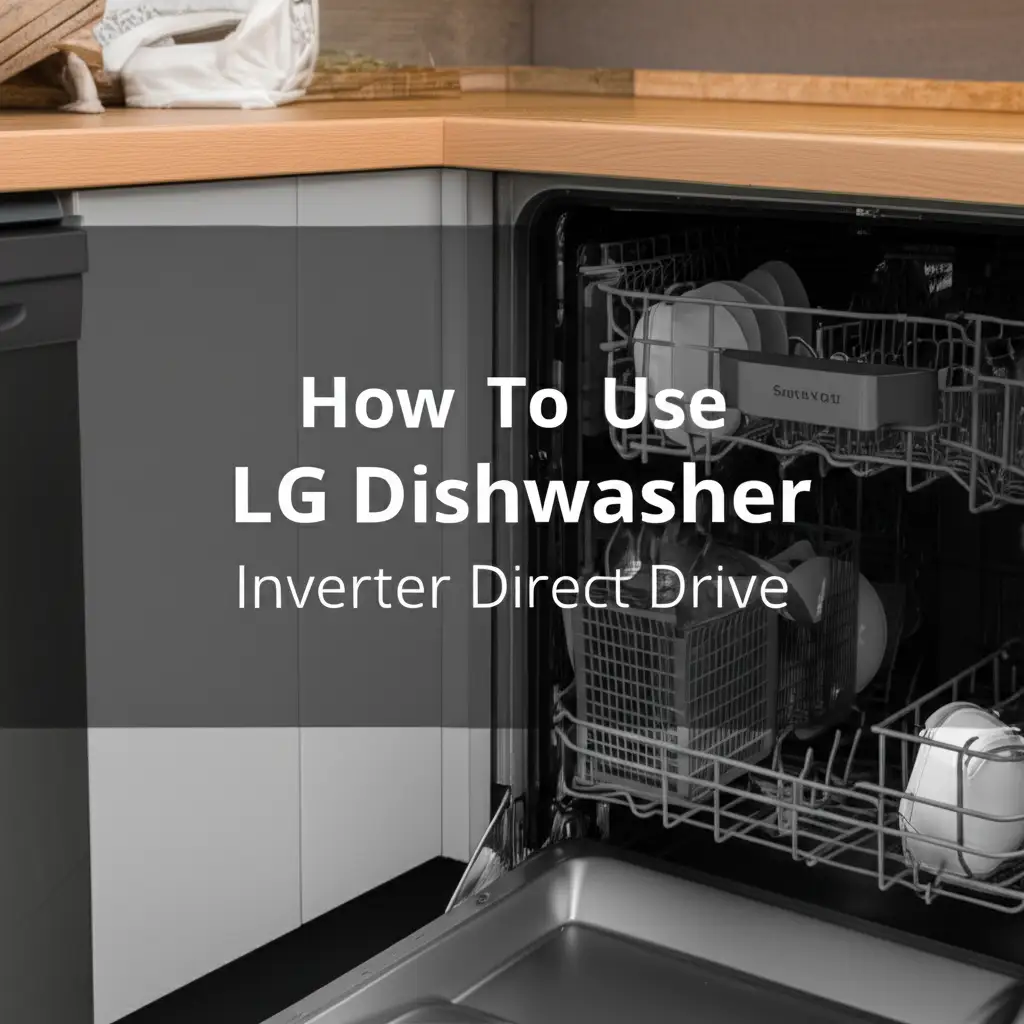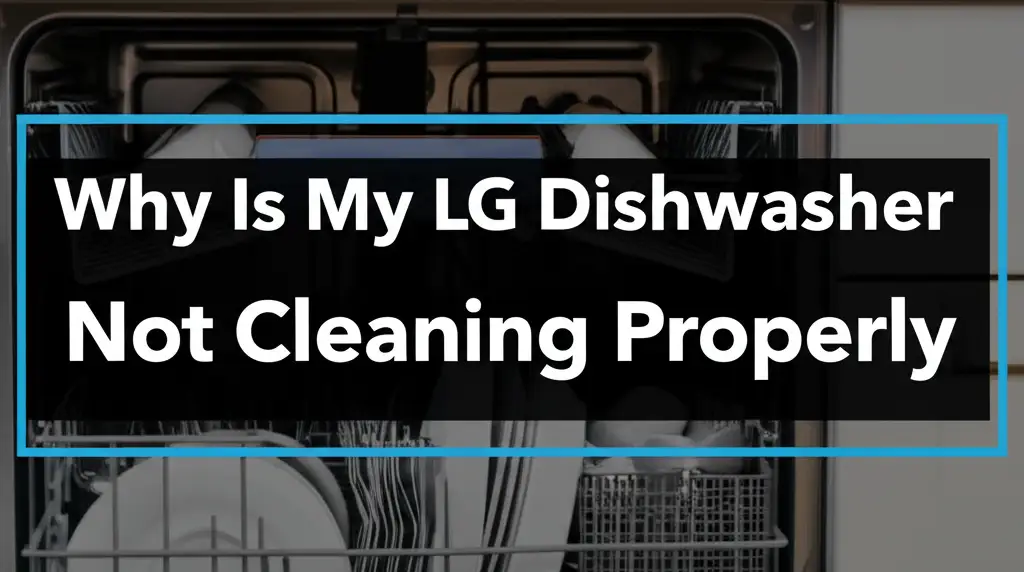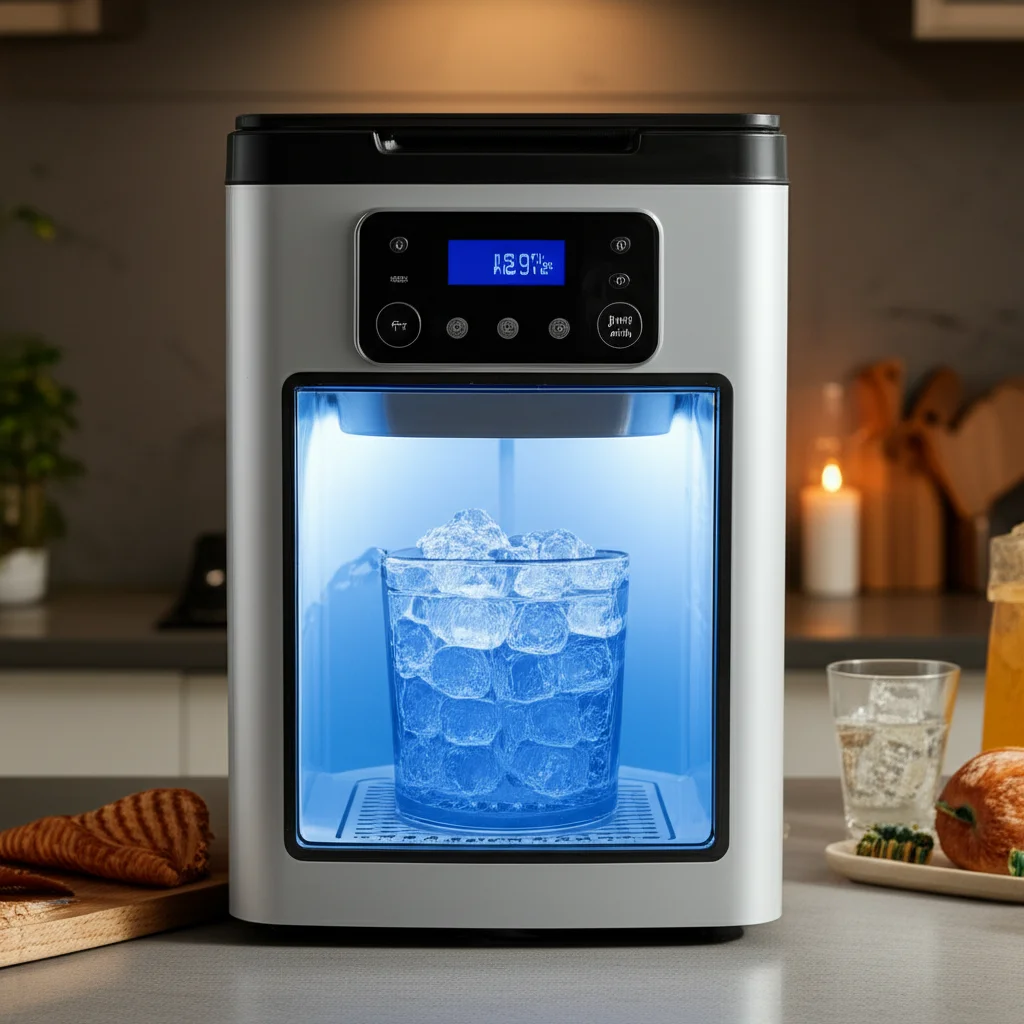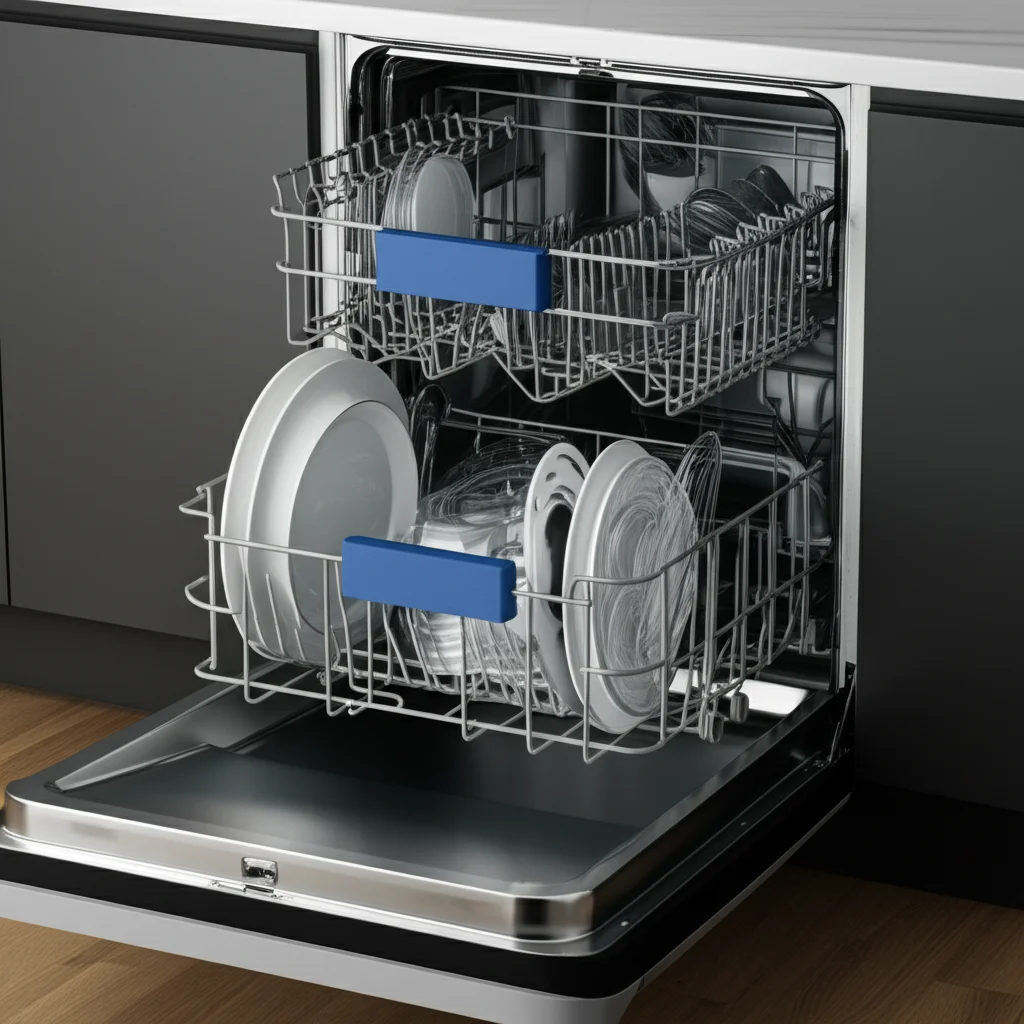· Todd Martin · Home Appliances · 14 min read
How To Use Lg Dishwasher Inverter Direct Drive

Mastering Your LG Dishwasher with Inverter Direct Drive
Getting a new appliance always brings excitement. Your LG dishwasher, with its Inverter Direct Drive technology, is a powerful addition to your kitchen. This advanced system helps clean your dishes quietly and efficiently. Knowing how to use it properly ensures sparkling results every time. I want to help you understand all its features. This guide will walk you through the setup, daily operation, and maintenance. We will cover everything from loading dishes to selecting wash cycles. You will learn how to keep your dishwasher running perfectly for years.
Takeaway
- Understand the benefits of LG’s Inverter Direct Drive for quiet, efficient cleaning.
- Learn correct loading methods to maximize space and wash quality.
- Choose appropriate wash cycles and options for different dish types.
- Maintain your dishwasher regularly for optimal performance and longevity.
- Troubleshoot common issues to keep your machine working smoothly.
To use your LG Dishwasher Inverter Direct Drive, load dishes correctly, add suitable detergent and rinse aid, select a wash cycle based on your load’s soil level, and press start. This direct drive motor delivers quiet operation and efficient cleaning. Regular maintenance ensures its long-term performance.
Understanding LG’s Inverter Direct Drive Technology
LG dishwashers often feature Inverter Direct Drive motors. This motor design is a key difference from traditional dishwashers. A direct drive motor attaches directly to the pump. This eliminates the need for belts and pulleys. Removing these parts reduces friction. Less friction means quieter operation. It also means less wear and tear on components.
The “inverter” part refers to how the motor controls speed. An inverter motor can adjust its speed precisely. This allows the dishwasher to optimize water pressure and flow. Precise control helps clean dishes more effectively. It also contributes to energy efficiency. Your dishwasher uses only the power it needs for each wash. This technology also leads to a more durable appliance. Fewer moving parts translate to a longer lifespan. You will notice the difference in sound, performance, and your utility bill.
First Steps: Installation and Initial Setup
Setting up your LG Inverter Direct Drive dishwasher is a straightforward process. Proper installation ensures safe and efficient operation. You need to connect the water supply, drain hose, and electrical power. Always follow the installation instructions in your owner’s manual precisely. If you are unsure, consult a qualified technician. I recommend checking all connections for leaks before running any cycles.
Once installed, you should perform an initial wash cycle. This helps flush out any manufacturing residues. It also ensures all internal components are ready for use. Add a small amount of dishwasher detergent for this cycle. Do not load any dishes for this initial run. This first cycle prepares your appliance. It ensures your first load of dishes will come out perfectly clean. For more details on this important step, you can refer to general guidance on how to use your LG dishwasher for the first time. This preparation sets the stage for optimal performance.
Before Your First Wash
- Remove Packing Materials: Check inside the dishwasher for any foam or cardboard. Remove all tape and protective films from the interior racks and exterior.
- Level the Appliance: Use a level to ensure the dishwasher sits flat. Adjust the leveling legs at the bottom if needed. A level dishwasher prevents vibrations and ensures proper draining.
- Water Hardness Setting: Some LG models allow you to adjust for water hardness. Refer to your manual to set this. Correct hardness settings optimize detergent use and prevent spots.
Loading Your LG Dishwasher Correctly
Loading dishes properly makes a big difference. It ensures optimal cleaning and drying. It also protects your dishes from damage. Start by scraping off large food particles. You do not need to pre-rinse dishes excessively. The powerful jets of your LG dishwasher handle most food residue. Place larger items in the bottom rack. This includes plates, serving dishes, and pots. Position them to face the spray arms. This allows water to reach all surfaces.
The top rack is for smaller items. Cups, glasses, and bowls fit here. Place them upside down to prevent water pooling. Utensils go in the utensil basket. Mix forks, spoons, and knives to prevent nesting. Point knife handles up for safety. Point fork and spoon handles down for better cleaning. Avoid overcrowding the dishwasher. Overloading blocks water and detergent from reaching all items. Proper spacing leads to cleaner dishes. Following these steps helps maximize your wash results.
Maximizing Space and Efficiency
- Bottom Rack: Place dinner plates, serving platters, and pots. Ensure tall items do not block the spray arm’s rotation. Angle items to allow water to drain away.
- Top Rack: Arrange glasses, cups, and smaller bowls. Lay plastic items on the top rack. This protects them from the hotter temperatures of the lower wash.
- Utensil Basket: Distribute silverware evenly. Avoid placing similar items together. Some models have specialized slots for each utensil. Use these for best results.
Selecting the Right Detergent and Rinse Aid
Choosing the correct detergent is crucial for clean dishes. Your LG Inverter Direct Drive dishwasher works best with automatic dishwasher detergent. This type of detergent comes in various forms. You can use powder, gel, or tablet detergents. Tablets often offer convenience and pre-measured doses. Always place detergent in the dispenser cup. Close the dispenser door securely before starting a cycle. Using too much detergent can leave a film on dishes. Too little detergent might result in unclean dishes.
Rinse aid is also important for drying performance. It helps water sheet off dishes. This prevents water spots and streaks. Fill the rinse aid dispenser regularly. A light indicator on your control panel often signals low rinse aid. Rinse aid ensures your dishes come out sparkling. It also helps plastic items dry better. Do not use hand dish soap in your dishwasher. This creates excessive suds and can damage your appliance. For further information on detergent use, explore articles like Can you use dishwasher liquid in dishwasher. This helps clarify proper detergent choices for your machine.
Detergent and Rinse Aid Tips
- Detergent Type: Use high-quality automatic dishwasher detergent. Tablets or pods offer convenience. Powders and gels allow for adjustable dosing.
- Dispenser Use: Place detergent in the main wash dispenser. Some models have a pre-wash dispenser for heavily soiled loads.
- Rinse Aid Level: Check the rinse aid indicator on your control panel. Refill the dispenser when it is low. This ensures optimal drying and prevents water spots.
Choosing the Optimal Wash Cycle and Options
Your LG Inverter Direct Drive dishwasher offers various wash cycles. Each cycle is designed for specific cleaning needs. Understanding them helps you achieve the best results.
- Auto Cycle: This cycle uses sensors to detect soil levels. It automatically adjusts wash time and temperature. Use it for mixed loads with varying soil.
- Normal Cycle: Ideal for daily loads with common food soil. This is your go-to cycle for most washes. It balances cleaning power with energy efficiency.
- Turbo/Express Cycle: For lightly soiled dishes or when you need dishes fast. This cycle runs shorter. It uses higher water temperatures for quick cleaning.
- Delicate/Gentle Cycle: Protects fragile items like crystal and china. This cycle uses lower temperatures and gentler spray pressure.
- Heavy Duty Cycle: Designed for pots, pans, and heavily soiled dishes. It uses more water, higher temperatures, and longer wash times.
Beyond cycles, your dishwasher may offer extra options.
- Half Load: Saves water and energy when you have a small load.
- Extra Dry/Night Dry: Provides enhanced drying, often with an extended heated dry phase.
- Delay Start: Allows you to set the dishwasher to start at a later time. This is useful for off-peak energy hours.
- Steam/TrueSteam: Some LG models feature steam for stubborn food removal. This option pre-treats dishes with steam before the main wash. Selecting the right cycle and options ensures efficient and effective cleaning for every load.
Maintaining Your LG Inverter Direct Drive Dishwasher
Regular maintenance keeps your LG dishwasher performing well. It also prevents potential issues. The filter system needs frequent cleaning. Food particles and grease can accumulate there. A clogged filter reduces cleaning performance. It can also cause odors. Locate the filter, typically at the bottom of the wash tub. Twist and remove it according to your manual. Rinse it under running water to remove debris. You can use a soft brush if needed. Reinsert the filter securely after cleaning.
The spray arms also need occasional inspection. Check for clogged holes. Food particles can block these small openings. Use a toothpick or small wire to clear any blockages. Wipe down the door gasket regularly. Food debris and mildew can build up there. This prevents a tight seal and can cause leaks. Use a damp cloth with mild soap for cleaning. Running a dishwasher cleaner or a vinegar rinse cycle periodically helps. This prevents mineral buildup and freshens the interior. Consistent maintenance extends the life of your appliance.
Essential Maintenance Steps
- Clean the Filter: This is the most important step. Clean the filter every few weeks or as recommended in your manual. A clean filter ensures effective draining and prevents odors.
- Inspect Spray Arms: Ensure spray arm holes are clear. Blockages reduce water pressure and impair cleaning.
- Wipe Door Gasket: Regularly clean the rubber seal around the door. This prevents mold growth and ensures a proper seal.
- Check Detergent Dispenser: Make sure the dispenser opens freely. Clean any residue that might impede its function.
- Run Cleaning Cycles: Use a specialized dishwasher cleaner or a cup of white vinegar in an empty cycle once a month. This helps remove mineral buildup and odors.
Troubleshooting Common LG Dishwasher Issues
Sometimes, your LG Inverter Direct Drive dishwasher may experience issues. Knowing how to troubleshoot common problems saves you time and effort. Many issues have simple solutions.
If your dishwasher is not filling with water, check the water supply. Ensure the water valve connected to the dishwasher is open. Look for kinks in the water inlet hose. Sometimes, the float switch inside the tub gets stuck. This switch prevents overfilling. Make sure it moves freely. For more specific guidance, see Why is my LG dishwasher not filling with water.
If you find water in the bottom of your dishwasher after a cycle, the drain is likely blocked. This can be due to a clogged filter. Refer to the maintenance section on how to clean your filter. The drain hose might also be kinked or clogged. Check the air gap (if installed) on your sink. It can get blocked. For deeper insights, read Why does my LG dishwasher have water in the bottom.
If your dishwasher takes too long to wash, it could be several reasons. Heavy soil sensors might extend the cycle if dishes are very dirty. Check if you selected a heavy-duty or sanitize cycle. These naturally take longer. Water temperature can also play a role. If the incoming water is too cold, the dishwasher will heat it, extending the cycle. Refer to Why does my LG dishwasher take so long to wash for detailed solutions. Always check your user manual for error codes. The manual provides specific troubleshooting steps for your model. If a problem persists, contact LG customer support.
Quick Troubleshooting Checks
- No Power: Check the circuit breaker. Ensure the dishwasher is plugged in securely.
- Dishes Not Clean: Verify proper loading, detergent type, and rinse aid levels. Clean the filter and spray arms.
- Unusual Noises: Check for items interfering with spray arm rotation. Look for loose items in the wash tub. The Inverter Direct Drive motor is quiet, so unusual noises warrant investigation.
- Leaking: Inspect the door gasket for damage or debris. Ensure the dishwasher is level. Check hose connections for tightness.
Exploring Smart Features and Connectivity
Many LG Inverter Direct Drive dishwashers offer smart features. These features enhance convenience and control. LG’s ThinQ app allows you to connect your dishwasher to your smartphone. With the app, you can start or stop cycles remotely. You can also monitor cycle progress from anywhere. This means you can run a load while you are away from home. The app also provides notifications when a cycle finishes. This prevents clean dishes from sitting inside for too long.
The ThinQ app can offer customized cycle downloads. You might find a specific cycle for sports bottles or delicate stemware. The app can also help with smart diagnosis. If an issue arises, the app can often identify the problem. It can even provide simple troubleshooting steps. This saves you time and potential service calls. Integrating your dishwasher into your smart home system adds convenience. You gain more control and peace of mind. These smart features make using your LG dishwasher even easier and more efficient.
Benefits of Smart Connectivity
- Remote Control: Start, stop, or pause wash cycles from your phone. This provides flexibility for your schedule.
- Cycle Monitoring: Receive notifications on cycle progress and completion. You always know when dishes are ready.
- Smart Diagnosis: Get immediate insights into potential issues. This helps with quick troubleshooting.
- Custom Cycles: Download specialized wash cycles for unique dish types. This expands your dishwasher’s capabilities.
Enhancing Dishwasher Performance and Lifespan
To get the most out of your LG Inverter Direct Drive dishwasher, focus on ongoing care. Proper usage and maintenance extend its lifespan. Always use high-quality dishwasher-specific products. This includes detergent and rinse aid. Avoid using abrasive cleaners on the exterior or interior. They can damage surfaces and seals. Regularly inspect your dishwasher for any signs of wear. Pay attention to the door seal and spray arms. Early detection of issues can prevent larger problems.
Consider running an empty hot water cycle with vinegar monthly. This helps remove mineral deposits and keeps the interior fresh. If you live in an area with hard water, this is especially important. Hard water can leave residue on dishes and inside the machine. Proper loading is also a continuous habit to cultivate. It affects both cleaning performance and energy use. By following these simple steps, you ensure your LG dishwasher continues to perform its best. You will enjoy sparkling clean dishes for many years.
FAQ Section
How often should I clean the filter on my LG dishwasher?
You should clean the filter on your LG dishwasher every few weeks. If you use your dishwasher daily or have particularly dirty dishes, clean it more often. A clean filter ensures optimal cleaning and prevents odors. It helps water drain properly from the tub.
Can I use liquid hand soap in my LG dishwasher?
No, you must never use liquid hand soap in your LG dishwasher. Hand soap creates excessive suds. These suds can overflow the dishwasher and damage the appliance. Always use automatic dishwasher detergent specifically designed for dishwashers.
Why does my LG dishwasher have a “Direct Drive” motor?
The “Direct Drive” motor in your LG dishwasher means the motor connects directly to the pump. This design eliminates belts and pulleys. It results in quieter operation and improved energy efficiency. It also reduces wear, making the appliance more durable.
What is the best cycle for everyday dishes on my LG dishwasher?
The “Normal” or “Auto” cycle is best for everyday dishes on your LG dishwasher. The “Normal” cycle handles typical food soil. The “Auto” cycle uses sensors to adjust settings based on soil level. Both provide efficient cleaning for regular loads.
My LG dishwasher lights are flashing. What does this mean?
Flashing lights on your LG dishwasher usually indicate an error code. This signals a specific problem. Refer to your owner’s manual to interpret the error code. The manual provides troubleshooting steps for each code. If the issue persists, contact customer service.
How do I use the “Delay Start” feature on my LG dishwasher?
To use “Delay Start,” load your dishwasher and add detergent. Press the “Delay Start” button repeatedly to select the desired delay time. Then press the “Start” button. The dishwasher will begin its cycle after the chosen delay. This is useful for off-peak energy hours.
Conclusion
Your LG Dishwasher Inverter Direct Drive is a powerful, efficient appliance designed to simplify your life. Understanding how to use it properly unlocks its full potential. From initial setup to daily operation and consistent maintenance, each step contributes to excellent performance. We covered loading techniques, detergent choices, and cycle selection. We also addressed important troubleshooting tips to keep your machine running smoothly.
Embrace the quiet operation and superior cleaning power of your LG dishwasher. By following the guidance in this article, you will enjoy clean, sparkling dishes for years to come. Remember, regular care and correct usage ensure its longevity and efficiency. Make the most of your investment and enjoy the convenience it brings to your home. Happy dishwashing!





